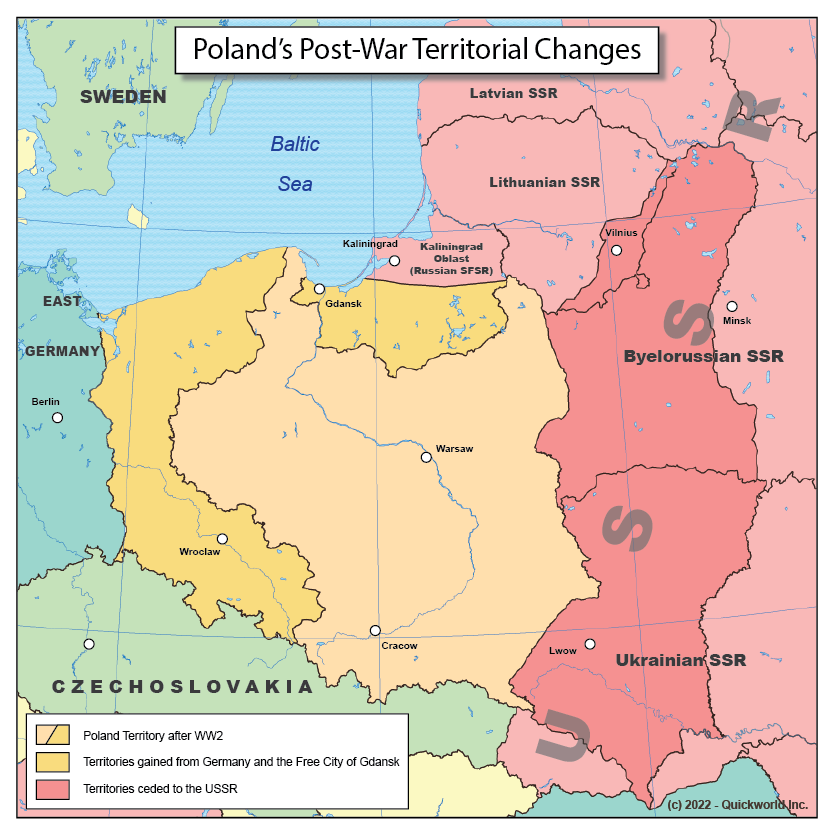Our Series on World War II takes us to Poland, a country whose territory was profoundly modified by the war.
After centuries of domination over parts of East-Central Europe, Poland disappeared as a state at the end of the 18th Century. The Polish ethnicity remained strong, however, while Poles were present in Russia, Germany and Austria. At the end of World War I, Poland was reinstated as an independent nation and a war allowed the new country to expand greatly at the expanse of Russia, which was going through a Revolution and became the USSR in 1922.
The new Soviet power, as much as the Nazi regime that took over Germany in 1933, resented the territorial losses to Poland and agreed in 1939 to split the young nation among themselves. Poland was the first nation to disappear completely as part of World War II, but the attack of the Soviet Union by Germany in 1941 changed the course of the War. Ultimately, the USSR defeated Germany with the help of its Western allies, and Poland was reinstated as an independent nation in 1945.
The territory of Poland was greatly modified. The USSR kept most of the lands that it had preempted in 1939, with the exception of the Bialystok region. As a compensation, Poland was allowed to annex major parts of Eastern Germany, including regions which had no Polish populations. Major transfers of population happened in the years following the war: up to 8 million Germans were expelled from Poland, while about 1.5 million poles relocated from Soviet areas.
Poland in 1947


